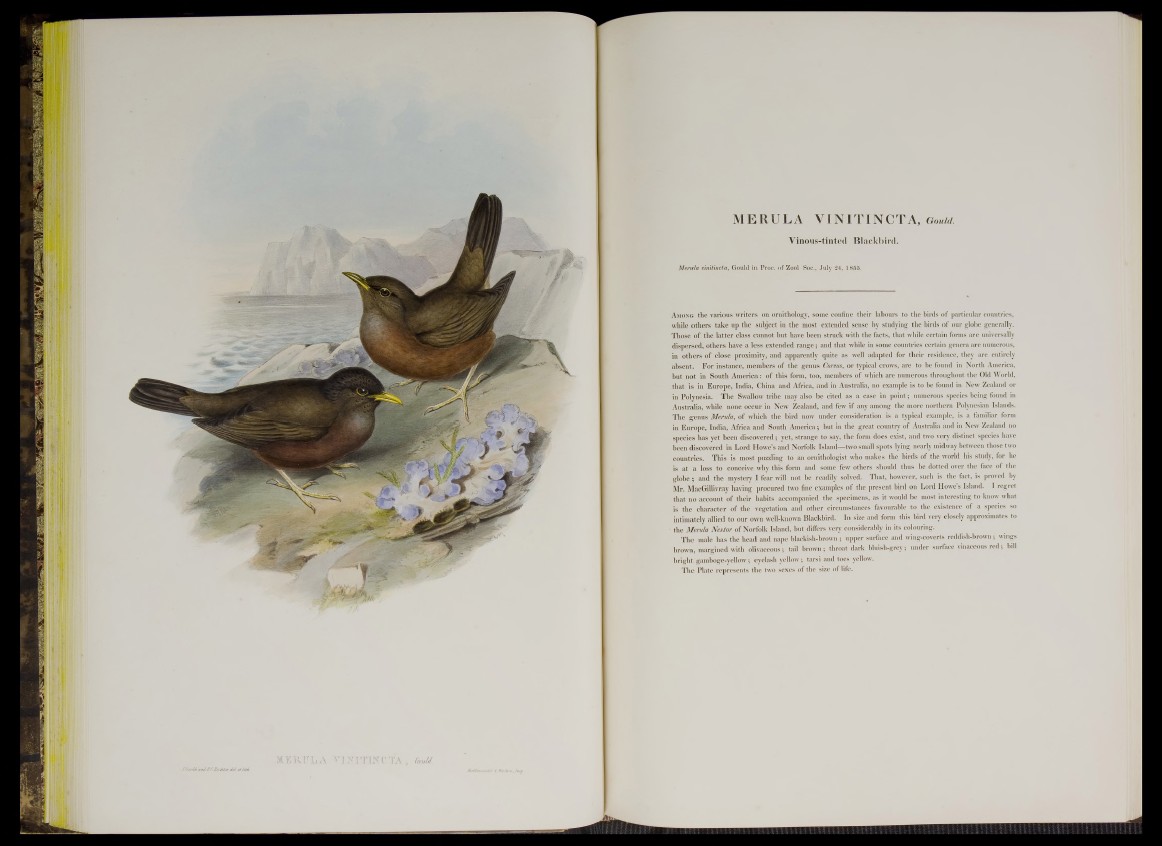
J.GmleL tcni/HCfitehttT'/ei ef fur
MERULA VINITINCTA, Gould.
Vinous-tinted Blackbird.
Merula vinitincta, Gould in Proc. of Zool Soc., July 24, 1855.
A mong the various writers on ornithology, some confine their labours to the birds of particular countries,
while others take up the subject in the most extended sense by studying the birds of our globe generally.
Those of the latter class cannot but have been struck with the facts, that while certain forms are universally
dispersed, others have a less extended range; and that while in some countries certain genera are numerous,
in others of close proximity, and apparently quite as well adapted for their residence, they are entirely
absent. For instance, members of the genus Corvus, or typical crows, are to be found in North America,
but not in South America: of this form, too, members of which are numerous throughout the Old World,
that is in Europe, India, China and Africa, and in Australia, no example is to be found in New Zealand or
in Polynesia. The Swallow tribe may also be cited as a case in point; numerous species being found in
Australia, while none occur in New Zealand, and few if any among the more northern Polynesian Islands.
The genus Merula, of which the bird now under consideration is a typical example, is a familiar form
in Europe, India, Africa and South America; but in the great country of Australia and in New Zealand no
species has yet been discovered; yet, strange to say, the form does exist, and two very distinct species have
been discovered in Lord Howe’s and Norfolk Island—two small spots lying nearly midway between those two
countries. This is most puzzling to an ornithologist who makes the birds of the world his study, for he
is at a loss to conceive why this form and some few others should thus be dotted over the face of the
globe; and the mystery I fear will not be readily solved. That, however, such is the fact, is proved by
Mr. MacGillivray having procured two fine examples of the present bird on Lord Howe s Island. I regret
that no account of their habits accompanied the specimens, as it would be most interesting to know what
is the character of the vegetation and other circumstances favourable to the existence of a species so
intimately allied to our own well-known Blackbird. In size and form this bird very closely approximates to
the Merula Nestor of Norfolk Island, but differs very considerably in its colouring.
The male has the head and nape blackish-brown ; upper surface and wing-coverts reddish-brown; wings
brown, margined with olivaceous; tail brown; throat dark bluish-grey; under surface vinaceous re d ; bill
bright gamboge-yellow; eyelash yellow; tarsi and toes yellow.
The Plate represents the two sexes of the size of life.